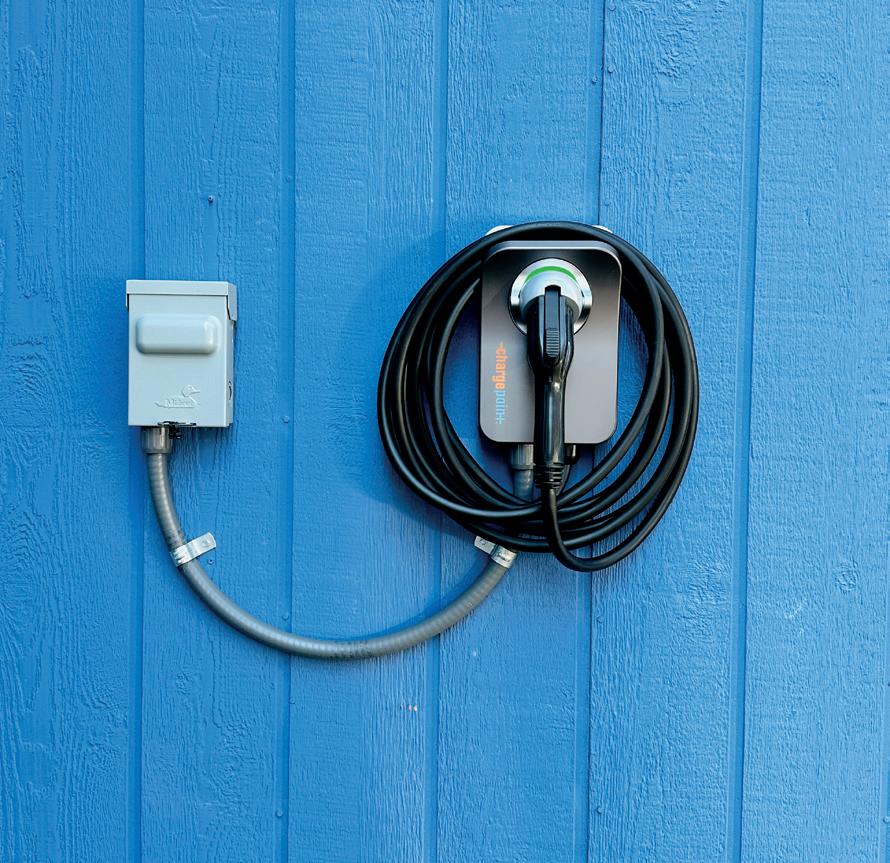
2 minute read
EV CHARGING SAFETY TIPS
Charging is a crucial concern among new owners of electric vehicles, whether plug-in hybrid or full electric. Fear of inconvenience is one of the biggest barriers to widespread adoption of electric vehicles. You might be concerned that there aren’t enough public charging stations in the area — and even if there are public charging stations nearby, do you really want to rely on them any time you need to refuel?
An EV charging station at home can solve this challenge of inconvenience. But are EV charging systems at home safe? Absolutely, as long as they’re installed correctly.
The first thing EV owners should consider is how they will charge their vehicles. A licensed electrician can evaluate your home’s EV charging situation, as well as:
• The vehicle’s charging capabilities and requirements, which vary depending on the make, model and type.
• The potential location of the panel and vehicle, including the distance from the panel to the garage, the degree of di culty, and whether the garage is attached or detached.

• The capacity and overall condition of your home electrical system to identify any concerns or additional work.

There are two common types of home charging options. Level 1 charging is a straightforward plug-in of the EV into any standard 120 V electrical outlet. This requires no electrical modification, and it normally takes about 14 to 20 hours to fully charge the EV. Unfortunately, this degree of charging may not always match the driver’s daily travel needs.
Level 2 charging units are sold separately from the vehicle. These units must be installed by a licensed electrician because they plug into a 240V outlet and charge much more quickly, typically in four to eight hours.
Here are a few safety tips to keep in mind when charging your EV at home:
• Select charging equipment that is certified to meet safety standards. Plug Level I EV chargers directly into an outlet designed to handle the amperage of the charging device. Never use a multi-plug adapter or extension cord. Purchase a Level 2 charging device that is certified by a nationally recognized testing laboratory.
• Check with your electric co-op and a licensed electrician before modifying your electrical system or installing a charging station. An electrician will need to make sure your home’s wiring complies with local, state, and national codes, and may need to obtain a permit before installation.
• Place all charging components out of reach of children when not in use.
• Maintain the components of your charging station according to the manufacturer’s maintenance guidelines.
• Cover the EV charging station outlet to prevent water exposure. Check the manufacturer’s guidelines to make sure it is safe to charge your EV in wet conditions.
• Most charging stations are equipped with safety devices such as GFCIs, which will identify electrical shorts and stop power to the charger to minimize risks.
EV chargers are thought to be extremely safe, but we recommend following these fundamental guidelines to reduce potential hazards. Remember to contact your electric co-op before installation. They can answer any questions you have and provide additional information on EV programs and rates.










